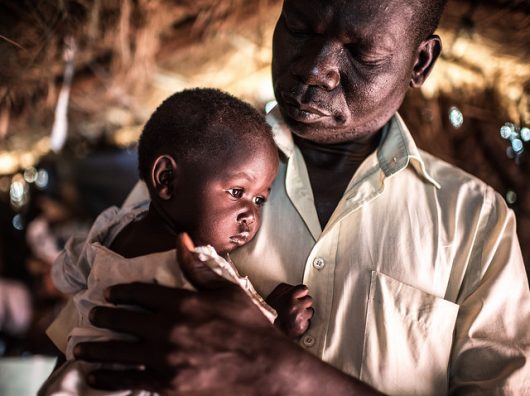
Montenegro is one of Europe’s poorest countries; a Montenegrin’s average income is around $7,300. Montenegro’s health expenditure per capita is only $460, well below the thousands of dollars some of its neighbors allocate for health. This low health expenditure causes problems for people needing treatment for deadly diseases and other types of illnesses. This being said, the top diseases in Montenegro are similar to those in the rest of the world.
Despite Montenegro’s standing, the southeastern European nation is largely unaffected by communicable diseases such as tuberculosis, measles, malaria and other vector-borne diseases. Instead, the top diseases in Montenegro are noncommunicable, and people can usually lower their risk of getting them by following healthy lifestyles.
Heart Disease
This may come as no surprise, as coronary heart disease is the number one killer in the world. It is also the leading cause of death in Montenegro. The disease killed 1,200 Montenegrins in 2012, the most recent data available from The World Health Organization’s country report.
The accumulation of fatty substances in the arteries causes coronary heart disease. Blocked blood flow to the heart can cause strokes, which killed an additional thousand people in 2012.
Two similar diseases, cardiomyopathy and myocarditis, make it more difficult for the heart to pump blood. These diseases killed 900 Montenegrins in 2012.
Obesity is a risk factor for developing coronary heart disease and cardiomyopathy. Around 22 percent of Montenegro’s 625,000 people are obese.
Since 2007, the government has tried to start children off with healthy eating habits by forbidding food and drink advertisers to market to minors. Because of these and other policies, the WHO predicts the country’s obesity rate will decrease, which may cause heart disease rates to decrease as well.
Cancer
Cancer is the second leading cause of death in Montenegro, accounting for 23 percent of all deaths. The most commonly lethal types are trachea, bronchus and lung cancers. Combined, they killed 300 Montenegrins in 2012.
Tobacco use is among the risk factors for cancer, especially ones dealing with the throat, mouth and lungs. Smoking is more prevalent in Montenegro than anywhere else in the world. The rate is 35 percent for males and 27 percent for females. On average, an adult Montenegrin smokes more than 4,000 cigarettes per year.
The government is doing something about this. Montenegro is party to the World Health Organization’s Framework Convention on Tobacco Control. In a 2015 report, it says it has worked to “completely prevent any visibility of tobacco products” because advertising them is banned.
In addition, an increase in excise rates has increased the price of cigarettes 20 percent. At the same time, warning images on tobacco packages that show harmful consequences has increased from covering 50 percent of the package to covering 65 percent.
Health education is also progressing in the country. The Ministry of Health now pays for youth counseling sessions geared toward quitting smoking. There is also counseling for pregnant women to warn them of the dangers of smoking while pregnant. The government holds workshops and uses the media to inform people further. Plus, there are elementary and secondary school classes on the negative effects of tobacco and alcohol use.
Alcohol consumption is another risk factor that can increase one’s risk for cancer or many other diseases. In 2010, Montenegro’s consumption per capita was 13.4 liters of pure alcohol. Montenegro implemented a national strategy for the prevention of alcohol abuse and alcohol-related disorders in 2012. The government regulates alcohol advertising and product placement, but there is room for other means of improvement. As of 2014, Montenegro had no national alcohol-monitoring program or legally mandated health warning labels on alcoholic drinks.
Of course, there are many other causes of heart disease and cancer besides poor lifestyle choices—genetics, age and environmental risks are a few. In addition, a less-than-perfect health care system can worsen the rates of top diseases in Montenegro.
Poor Healthcare and Sanitation
Most public hospital equipment in Montenegro is outdated and expensive to run. State hospitals and pharmacies often have little medicine and supplies. One woman told BalkanInsight that her appointment was rescheduled because the hospital did not have needles to do blood work. Others have to wait in long lines before they are seen.
Sanitation is also an issue in Montenegrin hospitals. A 2015 inspection revealed poor hygiene standards and dangerous bacteria in hospitals.
Montenegro has the lowest number of doctors per capita in Europe, and corruption is not uncommon, possibly because the doctors also have relatively low salaries. Some doctors ask for bribes in exchange for preferential treatment, putting impoverished patients in a tough position.
Some Montenegrins cannot receive adequate care with the problems facing state hospitals in Montenegro. When people go untreated, they may not be able to earn an income, which could drag them into poverty. Montenegro’s economy and poverty level could improve with improvements in the country’s health care system when the current policy ends in 2020.
The top diseases in Montenegro, such as heart disease and cancer, could affect fewer people in the future if the government continues healthy lifestyle education, expands regulation of harmful substances and updates medical facilities.
– Kristen Reesor
Photo: Flickr








 Comoros is a small island in the Indian Ocean, off the eastern coast of Africa. The nation only has a
Comoros is a small island in the Indian Ocean, off the eastern coast of Africa. The nation only has a 
